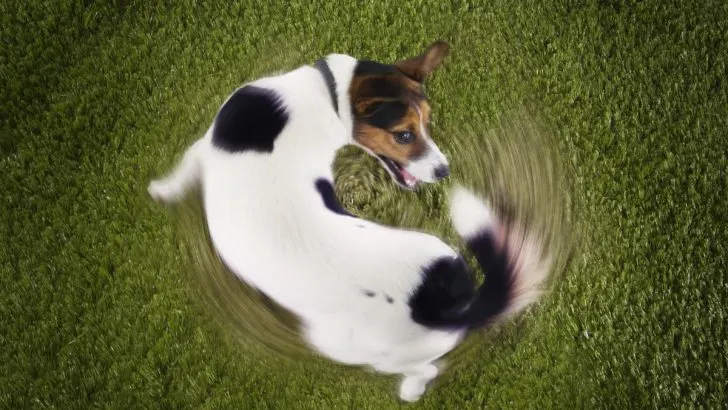There are many interesting, even historical reasons why do dogs circle before they lay down. Some might even shock you!
You must have noticed your dog performing a bedtime ritual at least once. Before laying down for a nap or to sleep, dogs pick a spot where they will lay and then walk at least one circle around that spot before lying on it.
Imagine if we did so. It would be hilarious!
This pre-nap circle is something we find adorable, but our pets find really useful! This is more of an innate behavior rooted deeply in the dog’s psychology and behavioral studies.
It has to do, aside from other reasons, with instinctual behaviors!
Let’s See The Possible Reasons Why Do Dogs Spin In Circles Before They Lay Down
All of us have some rituals before bedtime, right? You will probably change into your PJs, wash your face, and brush your teeth…
Your dog will just try to make a comfortable nest for the night!
Before turning in for the evening, they take their time making their bed. Before going to sleep, drowsy dogs perform a kind of dance and spin in circles.
They have a bit of a compulsive bedtime ritual that keeps them awake until they finish their daily dancing routine, no matter how sleepy or tired they are.
Let’s see what reasons might be behind this cute little ritual!
Their Grandparents Did It; Their Great-Grandparents Did It, So They Do It, Too
Dogs were not always in the form we know them today. They used to be wild animals, and before they slept for the night, their predecessors frequently spun around in a circle.
Wolf ancestors and coyotes did this out of survival instinct. By circling around before they went to bed for the night, dogs could have a final check for any potential predators.
A dog that circles can also help determine the wind’s direction, which will enable them to position their nose and detect any potentially dangerous scents that may be present in the air, even while they are asleep.
A pup that is napping could be attacked, so they need to be ready. Yes, even if they are the safest apartment in the world, with double locks. You never know.
Dogs are capable of chasing off predators if they detect their presence. And they can’t do that if they don’t double-check if there’s anyone around them, right? By circling about before they lay down, dogs could also ensure everyone in their group was still present and safe.
Your dog’s psyche still contains elements of its innate behavior.
The dog would also claim its place by circling before dropping to the ground. Scent can convey this message. Dogs can communicate more effectively because of the smell glands on their feet.
To Make Their Bed More Comfortable, If Possible
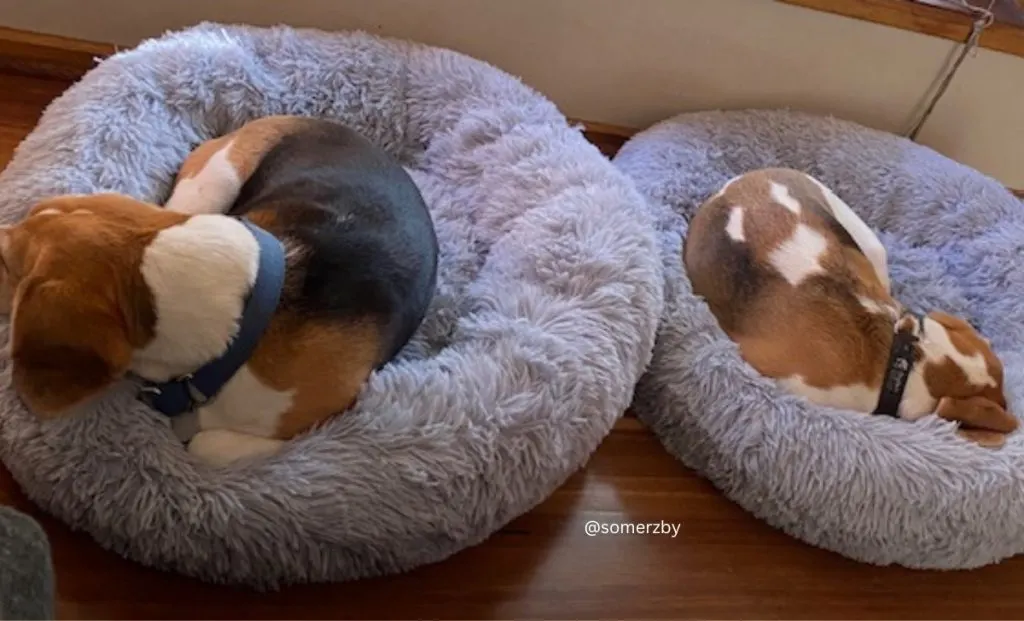
Before going to sleep in the wild, dogs would spin in a circle to get comfortable. To provide a level surface, they may remove snow, pat down leaves, or smooth down the grass that acted as their bed.
However, domesticated dogs, or the ones we have, walk in a circle to get into the most comfortable position before going to sleep.
Dogs and people alike may have specific preferences when it comes to their pillows. They want to find the ideal resting position to unwind and fall asleep. And no, it does not mean your dog’s bed is uncomfortable if they do this.
Your dog might spin around to smooth out the surface of the pillow or bed. Especially if your dog is expecting, she can start to guard her bedding as she gets ready to give birth to her puppies.
It Can Just Be A Habit
As I mentioned, they have learned this from their parents, grandparents, other family members, or friends or started doing it based on their innate inner feelings.
They started doing so themselves as they saw them during this little ritual before lying in their comfortable beds. Later, it became something comforting for them.
I mean, if wild wolves had this habit, together with rolling in poop, howling and growling, or biting and licking their paws, it’s no wonder they do this, too.
The dog’s ancestors have literally built in some habits by doing so for generations.
They Might Be Marking Their Territory
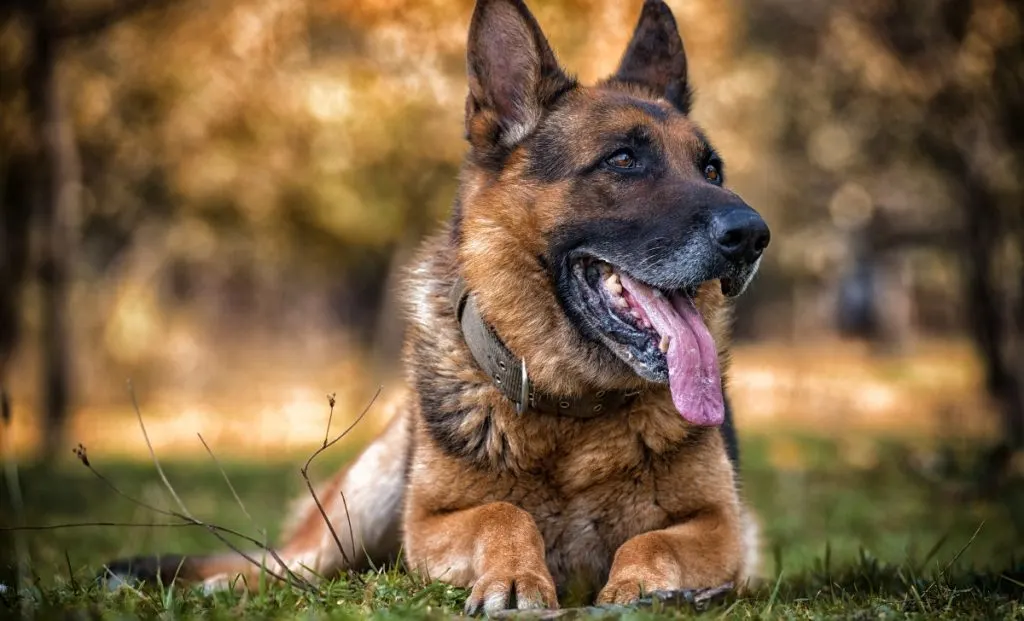
Dogs’ scent glands in their feet leave a trail of scent. That’s why dogs like sniffing when they are on a walk, which basically collects information for them.
That means if another dog goes by another’s dog bed, it will know its territory. Dogs take their own beds seriously!
There is no good night’s sleep before telling the world the place they sleep at is theirs, and theirs only.
Dogs are territorial beings. They like to follow a set of rules where everybody knows their limits and boundaries. This is normal behavior for them, as they were as such when they were domesticated dogs. Luckily, this bed-and-place territorialism doesn’t apply to us!
And nowadays, they’ll just face their bums towards you, and snore the night off.
Because Of Relationships In The Pack
If your dog is not an only child and you have two or more dogs, you will probably need to respect some pack rules and establish a hierarchy.
Dogs are known to be social animals. It is an important dog’s need to be spending time with other dogs. They thrive when they are socializing and having contact with other dogs, especially within their pack!
This pack mentality is inherited from undomesticated dogs and wolves. By doing this, they assess the reactions of other dogs to them, claiming that certain spot they decided upon to take. Their actions give them enough time to see other dogs’ reactions.
It can also be a sign of assertiveness and submission. You can tell it’s a sign of assertiveness when they claim their spot without looking for other dogs’ approval or reactions.
This can be a sign of submission, used to help dogs bond and show their place in the hierarchy. This is accompanied with other signs of submissive body language, such as a tail between the legs and flat ears.
To Regulate Their Body Temperature, Duuh!

Also, if you didn’t know, dogs used to regulate their body temperature by digging a specific spot on the ground, excavating cool soil during summer, and digging deeper to retain body heat and sleep in winter.
This is a really common thing to do if you have an outdoor dog. Regulating their body temperature in all seasons is highly important, and they do have this innate sense to do so.
As you know, dogs don’t sweat at all. They use other methods of regulating their body temperature, such as panting and warming up the spot they are about to take for the upcoming nap.
“Sometimes dogs, and other animals, will dig and spin when they’re outdoors because the ground slightly out of the sun is going to be cooler,” said dog behavior expert, Los Angeles-based author and Certified Professional Dog Trainer Nicole Ellis.
For example, when it’s a bit colder, circulating longer can be of a little help when creating a bigger depression in the memory foam, providing additional insulation.
Also, when it’s hotter, circulating around can provide some kind of air-conditioning moment, where they will create airflow around them and the place where they are about to sleep.
It Can Also Be A Sign Of Anxiety
Once upon a time, or more precisely, in prehistoric times, when your Golden Retriever was a ferocious wild dog, they had to be on guard, assessing the situation, and always taking a last look before deciding to go to bed.
Your dog’s roots come from a pack animal that must always be aware of its surroundings. And guess what? They had to be on the lookout for some potentially dangerous situations.
There wasn’t a human to protect them, and there wasn’t a safe space for them to sleep where they would get a solid, uninterrupted 8-hour nighttime sleep—not even close to that. They were a target for other packs of wild dogs and a food source for other, larger animals.
Overthinking is a problem that dogs experience, too, especially those that were abused by other dogs or, worse, previous owners or people in general.
They might be too afraid, constantly thinking about potential threats they might find if they don’t fulfill their circling practice perfectly.
Therefore, excessive dog turning might sadly be a sign of anxiety, showing that they don’t feel too safe.
When Should You Be Concerned If Your Dog Circles Before They Lay Down?
Circling, in general, is not a sign of something being wrong.
However, excessive circling can be a sign that something is wrong. Excessive anything is a sign that something is not right.
Let’s examine the times when you should be concerned enough to visit your veterinarian.
Your Dog Suddenly Starts Doing This All The Time
If your dog was not the type to make this move often and now do it excessively, it can be a warning sign. Sudden changes in behavior might indicate an underlying health issue.
If your dog is circling excessively, accompanied by some other odd signs or behaviors that were not shown previously, it is a sign that you should call your veterinarian.
It might just be a behavioral issue, for example, that your dog has developed anxiety, but it can also be a sign of some other underlying health conditions.
If This New Behavior Is Accompanied With Restlessness
Okay, so your dog has started circling around like never before, showing some new and, until then, unknown behavioral patterns.
If your dog seems restless, even when settled down after doing these circles, they might be showing you signs of being uncomfortable or in pain.
That pain, discomfort, and the inability to find the “perfect spot” can be, especially in older dogs, a sign of arthritis, some internal problems, or an injury you missed.
If this is the behavioral pattern you have noticed, first do a whole-body check, gently pushing every part of the body and searching for the source of the pain. Check for any bruised spots, cuts, or wounds.
Especially if your dog is making sounds while circling or trying to find the perfect spot, such as whining, which is an alert for you.
When They Do It Obsessively
If your dog does an excessive number of circles, it can be a sign of a not-so-charming behavior. This could potentially indicate that your dog has potentially developed a compulsive disorder.
Compulsive disorders are extremely repetitive, almost like an obsessive ritual.
Flank-sucking, circling, pacing, licking their owner’s legs and feet, nibbling on items, tonguing or licking the air, and other self-mutilating habits are examples of compulsive behaviors in dogs.
Finding and treating underlying medical problems is the first step toward validating the diagnosis.
The same symptoms that are associated with compulsive disorders can also be caused by painful body parts, neurological problems, and dermatological disorders. A detailed diagnostic workup and, in certain situations, a drug trial may be required to rule out underlying medical problems.
In the event that compulsive disorder is identified as the cause of the issue, medications that block serotonin reuptake may be useful in lowering or managing certain behaviors.
When Your Dog Seems Bored And Does Not Want To Go Out
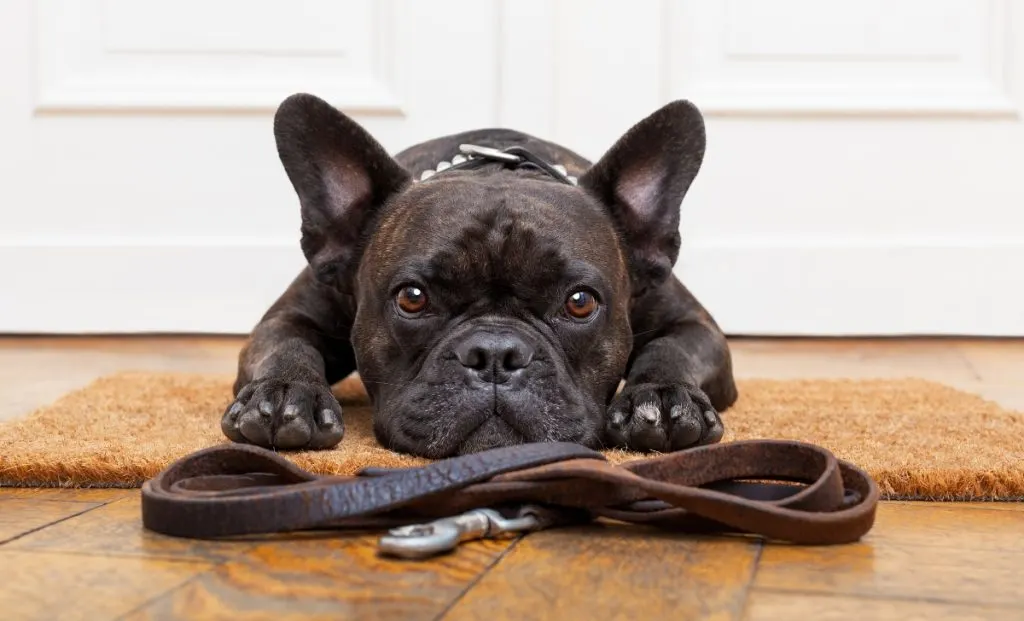
If you have recently lacked stimulation from your side toward your dog, not spending enough time together, or missing out on some regular activities – it might result in your dog finding new ways to re-focus their energy.
Dogs are intelligent animals, and they need a lot of mental and physical stimulation in order to stay healthy and happy.
Walking your dog just a few minutes a day, not giving your dog regular pets, balanced meals, dog rubs on the belly, love, and attention might result in a dog that lacks happiness and does not want to go out—something almost like a doggy depression.
Dogs left alone for a long period of time or unattended without affection can start performing these obsessive little rituals to help them cope mentally.
Sadly, as strange as this sounds, it happens. There are many kinds of dog owners, and sadly, not all of them are as responsible as their dogs deserve.
When The Dog Is In An Inadequate Environment
When you imagine a perfectly happy dog, you see a clean and tidy dog running around a valley in spring with flowers all around him.
Well, many dogs won’t have this opportunity because they are often confined to small spaces. Dogs that were once roaming around in nature’s wilderness (don’t imagine them in the forms we see today; imagine them as something close to wolves) can’t thrive in small spaces.
This is especially true for larger dogs that were police dogs or working or herding dog breeds. These dogs are used to being on the go all the time, working, exploring, and running around.
Dogs might start circling around excessively because they lack mental stimulation. It happens because of boredom, some kind of frustration, and a lack of ways to spend their energy.
If you can see yourself or traces of it in this description, please provide your dog with many more activities, such as interactive dog toys, more walks, and going to the dog parks – all to shift their focus to something else.
Now, Let’s Revise What We Have Learned
Dogs have many charming behaviors, and circling does not have to be one of those.
This behavior could have been descended from wild canids, which circled around before sleeping to regulate the temperature, assert assertiveness, or submissiveness.
A dog’s tendency in colder months, especially if it lives outside, is to circle around to find the perfect, comfortable spot. Also, in the warmer months, they’ll circle around to pat down the tall grass to be more aware of their surroundings.
If your dog is healthy, you and your veterinarian have both checked it, and the dog is still doing these obsessive behaviors – ask yourself: are you providing enough mental and physical stimulation to your dog?
Are you providing enough dog scratches, balanced meals, and many daily walks? If not, those might also be reasons why do dogs circle before they lay down. Surprising, I know!
Read next: Why do dogs nibble on you
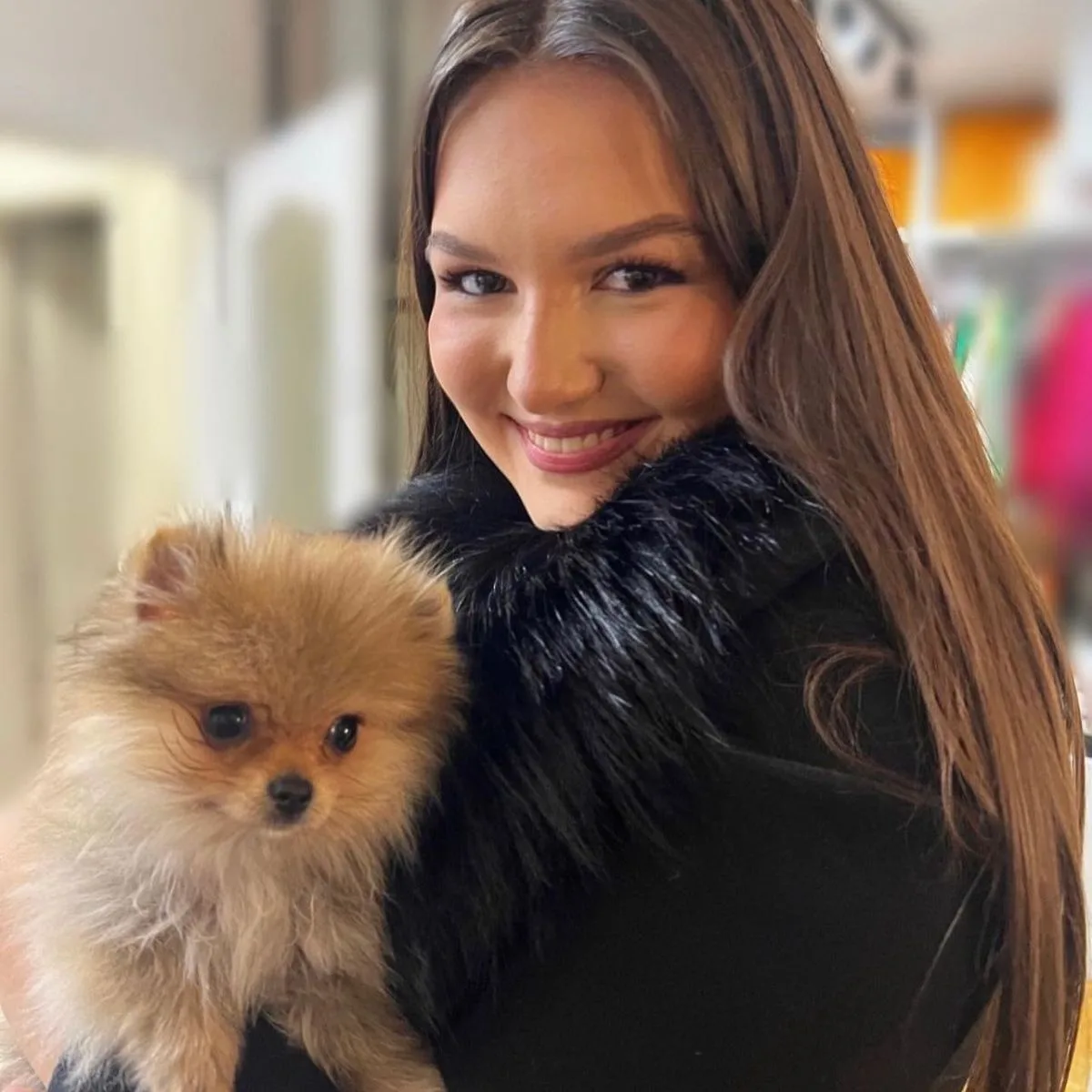
Zerina is an experienced content writer who found her passion for writing while pursuing her degree in English language and literature.
Growing up with a beloved dog as her companion, Zerina developed love for canines from a young age. Inspired by her bond with her furry friend, she decided to combine her writing skills with her love for dogs.
